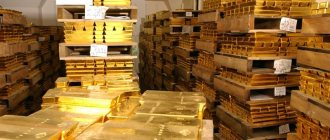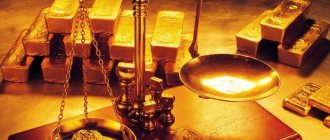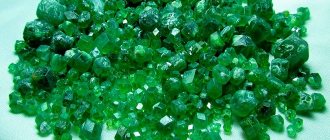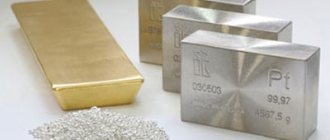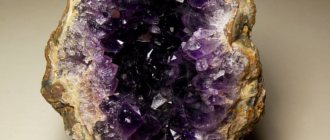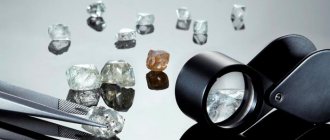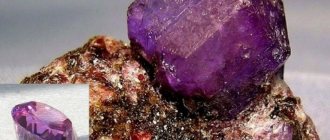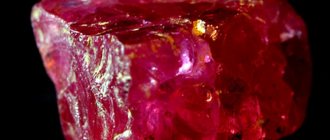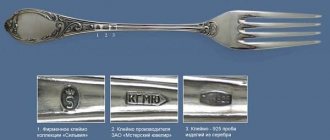General provisions of 41 Federal Law
Federal Law No. 41 “On Precious Metals and Precious Stones” was adopted by the State Duma of the Russian Federation on March 4, 1998, and the legislative draft was approved 8 days later. The latest amendments to Federal Law 41 were made on July 18, 2021.
The provisions of Federal Law 41 regulate relations arising:
- in the process of geological exploration;
- when searching for precious stones and metals, as well as during: their extraction;
- production;
- treatment;
- use.
Based on the law, it is established:
- Scope of the state monopoly.
- The goals of regulating the activities of individuals and legal entities.
- Conditions under which activities related to precious metals and stones are carried out on the territory of the Russian Federation.
- Types and forms of state control over:
- production;
- use;
- and other types of control over precious metals and stones.
- Status of reserves of gold and other jewelry in Russia.
Federal Law No. 41 consists of 9 chapters and 32 articles. Summary:
- Chapter 1 - reveals the general concepts used in the text of the law and the subjects of mining and production of precious metals.
- Chapter 2 - lists the availability of state funds and the amount of reserves of precious metals and stones in the territory of the Russian Federation.
- Chapter 3 includes 6 articles and describes the procedure for regulating relations in the field of geological activities at the state level.
- Chapter 4 - explains the concept of the state permitting system. The chapter includes 5 articles, 2 of which have lost force.
- Chapter 5 - contains 4 articles that describe the applications of mined precious metals and stones.
- Chapter 6 - reveals the procedure for carrying out international and foreign economic activities in the field of extraction and use of precious metals and stones.
- Chapter 7 - includes 3 articles. Describes measures for implementing state control over:
- production;
- use;
- circulation of precious metals and stones.
- Chapter 8 - reveals the list of persons responsible for compliance with the provisions of Federal Law 41.
- Chapter 9 describes the procedure for the entry into force of a legislative draft.
What changes have been made?
Federal Law No. 41-FZ of March 26, 1998 “On Precious Metals and Precious Stones” was edited on July 18, 2021. Amendments were made to Article 11. Subclause 3 was changed. The words and other credit institutions were added to it.
In addition to the changed article, Federal Law 41 contains articles that need to be considered when studying the legislative draft in detail:
Article 6
The provisions of Article 6 list ways to replenish the state fund of precious metals and stones:
- by purchasing them from specialized market entities from the federal budget;
- purchasing unique species from private organizations;
- acquisition from legal entities and individuals of valuables that have historical and cultural heritage;
- scrap and waste;
- discovery of treasures and others.
Precious metals and stones can be obtained compulsorily, established by law.
Article 10 Federal Law 41
Paragraph 2 of Article 10 describes ways to regulate relations arising in the process of carrying out geological activities:
- checking the availability of a license for the activity being carried out;
- establishing requirements for organizations that mine precious metals and stones;
- promulgation of rules for processing, transporting and transporting valuable natural resources;
- control over subjects and their activities.
Also, the responsibilities of the authorized bodies include establishing the procedure for sorting and assessing natural resources.
What is the legal status of precious stones?
According to the provisions of Federal Law 41, the concept of precious stones includes:
- natural diamonds;
- emeralds;
- rubies;
- alexandrites;
- sapphires;
- natural pearls, processed and natural;
- amber formations belonging to a unique species.
Important! Materials of artificial origin are not classified as precious stones.
Natural precious stones are mined and processed in the following ways:
- Extracting them from:
- indigenous;
- alluvial;
- technogenic deposits.
- Sorting and distributing them into groups.
Turnover of precious metals in the Russian Federation
In Russia there is a federal fund of reserve deposits of precious metals and stones. It was created to regulate the volume of valuable metals and stones on the territory of the Russian Federation. This fund is regulated by the government.
The State Fund of Precious Metals and Stones is a complex of mined valuable metals and stones, as well as products made from them. The fund makes up part of the gold and foreign exchange reserves of the Russian Federation.
The fund was created for:
- meeting the production and scientific needs of Russia;
- meeting financial and social needs.
All extracted materials are the federal property of the country. The President decides on the replenishment and expenditure of the fund.
Rules for mining precious metals in Russia
According to the provisions of Federal Law 41, before carrying out geological activities, authorized persons must study the rules for the extraction of precious metals, which include the following:
- Any activity related to the extraction, processing and study of precious metals is carried out on the basis of a license.
- Only licensed organizations have the right to engage in geological activities.
- Construction mining is carried out for all types of precious metals, except diamonds. This type of activity does not require government investment and is encouraged by the state.
- Organizations involved in the refining of precious metals can carry out their work on the basis of a list of rules established by the government of the Russian Federation.
- Extraction of valuable metals is permitted from the moment a license is obtained and ceases when it expires.
Legal issues of turnover of precious stones and not only precious stones
A.V. Vakulenko
—
partner of Legal, Candidate of Legal Sciences, member of the Society of Russian Experts on Subsoil Use
Federal Law of March 26, 1998 No. 41-FZ “On Precious Metals and Precious Stones” (hereinafter referred to as the Law on Precious Metals and Precious Stones) only classifies as precious stones natural stones (natural diamonds, emeralds, rubies, sapphires and alexandrites, as well as natural pearls in raw (natural) and processed form (Article 1).
From a gemological point of view, it is not entirely clear why pearls are included in the category of precious stones, since they are a product of organic origin and are not a mineral. It would be more logical to classify pearls, as well as unique amber raw materials, as formations that are equated to precious stones.
At the same time, precious stones may or may not have jewelry quality (Resolution of the Government of the Russian Federation dated November 23, 1998 No. 1365 “On the criteria and procedure for classifying precious stones as unsuitable for making jewelry”).
The main criteria for classifying precious stones as unsuitable for making jewelry are their size, weight, color and quality characteristics, as well as the economic feasibility of their processing at cutting industry enterprises.
Within the meaning of Decree of the Government of the Russian Federation dated January 19, 1998 No. 55 and Decree of the Government of the Russian Federation dated April 5, 1999 No. 372, only cut certified precious stones are allowed for retail sale to individuals. The sale of precious stones without a certificate can be classified as a crime under Art. 191 of the Criminal Code of the Russian Federation.
However, in gemology there is the concept of “ennobled stone”. This is a natural stone, not classified as precious, which, through physical influence on it, changes or improves its properties and becomes precious, or acquires jewelry quality.
For example, corundum can be transformed into sapphire through high-temperature treatment. Or a ruby that does not have jewelry quality (cracks, color, clarity, inclusions) is brought to jewelry quality using the same heat treatment.
Such refined stones are not artificial (synthetic), since they are extracted from the depths. They just didn’t lie that long and weren’t quite where they needed to be. However, it is impossible to equate natural stones with refined ones. It is quite clear that the latter should be sold on the market at a discount compared to natural ones. But at the legislative level, the concept of “refined stone” still does not exist, just as there is no legal regulation of the circulation of such refined stones, which creates the preconditions for misleading buyers of such refined stones.
In addition, at present in Russia there is no state registration of synthetic stones (grown artificially and having the properties of natural ones). According to the ALROSA Center for Strategic Projects and Analytics, only every fifth diamond grown in a laboratory for the jewelry industry is declared (https://rg.ru/2018/05/31/minfin-predlozhil-kontrolirovat-oborot...), which speaks about the volume of the black market for synthetic stones.
On the market, synthetic diamonds are sold at a 40% discount compared to naturally grown stones. But existing devices cannot give a 100% guarantee that the stone being purchased is natural. Therefore, there are cases of unscrupulous sellers deceiving buyers and selling them synthetic diamonds under the guise of natural ones.
In May 2021, the Russian Ministry of Finance developed a draft federal law on amendments to Art. 1 of the Federal Law “On Precious Metals and Precious Stones” (02/04/05-18/00081179) - www.regulation.gov.ru/projects#npa=81179. In it, he proposed to indicate that the procedure for the use and circulation of synthetic stones that have the characteristics (properties) of precious stones will be established by the Government of the Russian Federation (the project is still at the stage of independent anti-corruption expertise).
Further steps, according to the Russian Ministry of Finance, should be the introduction of measures to control the circulation of synthetic stones for the jewelry market, as well as regulation of their import into the territory of the EAEU and a ban on the use of the classification of stones of natural origin for artificially grown stones.
One of the attempts of the Russian Ministry of Finance to regulate the artificial stones market was the draft resolution of the Government of the Russian Federation “On Amendments to the Rules for the Sale of Certain Types of Goods” developed in May 2021 - www.garant.ru/….
In particular, this project proposes to determine that jewelry containing inserts of artificial stones should be placed in separate display cases in the sales area with the installation of a sign with the corresponding information inscription.
All of the above concerns the circulation of precious stones. But subsoil users still mine and sell so-called semi-precious stones (malachite, rhodonite, jadeite, etc.) on the market.
There is no legal definition of the concept of “semi-precious stone” as such. There are separate classifications proposed by various geological and gemological organizations and scientists. There is also a list of semi-precious stones approved by Decree of the Government of the Russian Federation of August 31, 2021 No. 1029, which is used for the purposes of applying Art. 7.5 Code of Administrative Offenses of the Russian Federation. This list includes others, in addition to those expressly specified in Art. 7.5 of the Code of Administrative Offenses of the Russian Federation, semi-precious stones are classified as beryl, including aquamarine and heliodor.
Art. itself 7.5 “Unauthorized extraction of amber, jade or other semi-precious stones” of the Code of Administrative Offenses of the Russian Federation appeared in December 2021 with active lobbying for its inclusion in the Code of Administrative Offenses of the Russian Federation by the Kaliningrad Amber Combine. According to the KYK, it should be aimed primarily at combating illegal amber mining.
By the way, unique amber formations are equated to precious stones within the meaning of Art. 1 of the Law on Drugs. metals and precious metals stones. The criteria for identifying unique amber formations are defined in the Decree of the Government of the Russian Federation dated January 5, 1999 No. 8 “On approval of the Procedure for classifying unique amber formations as precious stones” (weight over 1000 g, inclusions over 10 mm, etc.).
That is, everything that is not unique amber formations is just amber, for the illegal extraction and sale of which a person can simultaneously be brought to administrative liability under Part 1 of Art. 7.3. (unlicensed mining) and 7.5. Code of Administrative Offenses of the Russian Federation. But for the illegal extraction and sale of unique amber formations, they will be subject to criminal liability under Art. 191 of the Criminal Code of the Russian Federation.
At the same time, the fine for legal entities under Art. 7.5 Code of Administrative Offenses - from 10 to 60 million rubles. with the possibility of confiscation of instruments for committing an offense (special equipment, vehicles). The statute of limitations for bringing to administrative liability under this offense is 1 year from the date of commission of the administrative offense.
Judicial practice shows that people are charged mainly under Art. 7.5 of the Code of Administrative Offenses of the Russian Federation for persons illegally mining amber.
Separately, it should be said that there is still no union of miners of precious and semi-precious stones in Russia that could lobby the interests of subsoil users in this market segment and come up with a legislative initiative to bring the legislation on the circulation of precious and semi-precious stones into line with existing realities. Each company, to the best of its ability and status, tries to resolve its issues independently. In this case, ALROSA is the most fortunate, which is quite understandable, (lobbying for the introduction of Part 8 of Article 9 in the Zone with regard to the right to extract mineral resources).
Currently, there is only the Jewelers Guild, which includes the Association of Russian Diamond Manufacturers.
Published in the magazine “Gold and Technology”, No. 3(45)/September 2021
